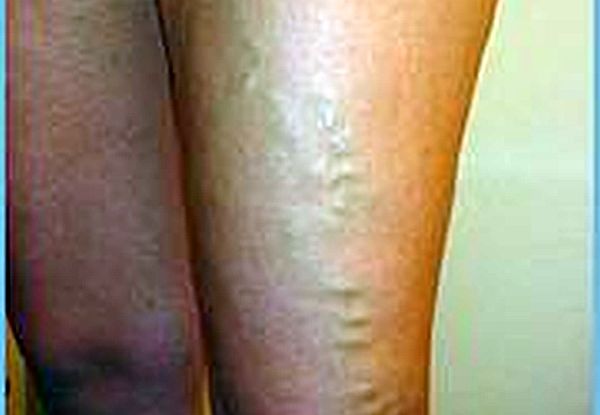
Spider veins are like varicose veins but they are much smaller. They often begin as small capillaries that are blue or red squiggles on the skin. Most common areas are over the surface of the thighs, calves and ankles. Unfortunately, it is estimated that at least one third of the adult female population will experience spider veins at one time or another in their life.
Women often seek treatment for spider veins because they are of cosmetic concern. And, for cosmetic reasons, insurance companies will not cover the treatment. However, it is not uncommon for spider veins to also cause specific symptoms, such as aching, heaviness or itching on the legs. Spider veins are associated with larger underlying varicose veins and are sometimes a precursor to those larger medical problems. (1)
To fully understand how a spider vein will materialize it is important to understand the underlying physiology of the vascular system. Normally, oxygen enters the lungs and is transferred to arterial blood supply. This blood is then pumped around the body using the force behind the heart muscle. Once the blood gets to the furthest end of the arterial supply and no longer has oxygen to deliver to the cellular system, it begins its long journey back to the lungs to pick up more oxygen.
The blood that travels through the arterial system has the advantage of the heart muscle to provide force, but the venus system must use another process to move against gravity back to the heart. This system is the venus pump system. Using a system of one way valves and muscle contraction, the blood moves slowly against gravity to the heart. If a person stands or sits for long periods of time without any muscle contraction, these valves can be damaged from pooling of the blood. This leakage causes the blood to pool near the surface and triggers the development of varicose veins and spider veins.
Experts say that spider veins occur mostly on the legs and face and are also known as telangiectasia. They begin in a woman’s 40s and 50s and are formed when superficial veins near the skin surface leak tiny amounts of blood.
Spider veins can actually take on three different forms. They can appear in a spider shape, with a group of veins radiating outward from a central point. They can appear as a pattern that resembles the branches of a tree or they can be linear as separate thin lines. Men and women can have specific risk factors that increase the probability that they will develop spider veins. These factors can include heredity or genetics. In other words when a family member also has the same difficulty they are at higher risk for developing spider veins. Women who are pregnant, suffering from menopause or other hormonal metabolic diseases, increased weight gain, occupations or activities that require prolonged standing or sitting and trauma all increase the risk that an individual suffer from spider veins.
Many of these factors that increase risk will increase the pressure on the lower extremities and venus system. For instance increased weight gain, pregnancy and standing or sitting for long periods of time will all increase the risk of valvular damage in the veins.
A common form of treatment for spider veins is sclerotherapy. This is a procedure done in the office where the spider veins are injected with a solution that causes them to collapse, clot and eventually become reabsorbed. This procedure is not usually done for cosmetic reasons but because there are other associated symptoms. Many people will require several different sessions to receive the maximum benefit.
Another treatment option for spider veins is done with a laser. During this process an intense light is directed onto the veins, which eliminates them permanently. This is especially suited to treating veins in which a needle cannot be used.
Treatment of spider veins is also common enough to have started a global market of creams and over-the-counter treatments. The products do not generally meet with the approval of physicians because no studies have been done to prove their efficacy. In some cases the topical treatment will contain vitamin K oxide which has been shown to rebuild vascular walls and repair damage that reduces the appearance of spider veins.
While the gold treatment of spider veins is sclerotherapy, many will choose an initial $50 over-the-counter cream before spending several hundred dollars for a treatment in the physician’s office. Prior to starting any type of treatment you should have your spider veins evaluated by your primary care physician to determine whether or not there are any underlying medical conditions which may have precipitated the onset of spider veins and must be treated as well.
Resources:
(1) WomensHealth.gov: Varicose Veins and Spider Veins Fact Sheet
https://www.womenshealth.gov/a-z-topics/varicose-veins-and-spider-veins


